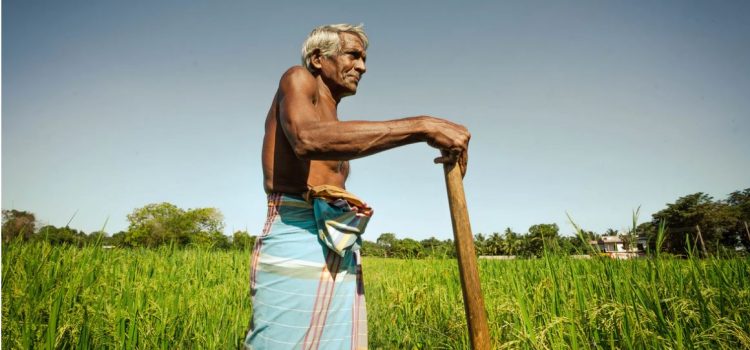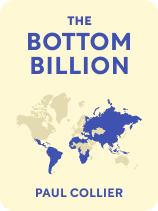

This article is an excerpt from the Shortform book guide to "The Bottom Billion" by Paul Collier. Shortform has the world's best summaries and analyses of books you should be reading.
Like this article? Sign up for a free trial here .
How can foreign trade policies help poor countries develop? How can fair trade practices backfire?
Economist Paul Collier says in his book The Bottom Billion that trade can help poverty, but it can also make things worse. He outlines practices the West can use that will actually help poor nations grow rather than trapping them in poverty.
Here’s how trade fights poverty.
Trade and Poverty
Collier believes trade fights poverty if the policies are done correctly. As they’re designed now, though, Collier is critical of both rich country and poor country trade policies, arguing they both hurt the bottom billion by stifling competition, rewarding inefficient businesses, and making exports more difficult. He explains how various well-intentioned policies backfire.
Rich Country Trade Policies
When rich nations subsidize their own farmers (as the U.S. does with cotton and sugar, for example), Collier says this pushes out farmers in poor countries whose livelihoods rely on producing and exporting these crops. Also, when processed materials suffer higher tariffs than raw materials, poor farmers are discouraged from processing their exports (which would increase their revenues).
| Subsidizing American Farmers The US government has been subsidizing American farmers since the Great Depression and the Dust Bowl of the 1930s. Today, federal aid to farmers consists of direct payments, crop insurance, and loans. Proponents of these policies argue that they protect farmers from price swings and natural disasters, and allow America to grow its own food rather than relying on imports. Critics argue that transfers go mainly to wealthy farmers and that subsidizing production encourages an increase in supply, which leads to lower prices and more subsidies for farmers. In 2000, more than 40% of net farm income came from government payments, a peak since the programs were implemented. Collier and others argue that the West would be better off repealing these subsidies and forcing domestic farmers to compete for themselves. The bottom billion could benefit from producing crops, and consumers in the West would pay lower prices. |
Collier argues that the “fair trade” practice of companies paying more than market value for their raw materials to help poor farmers backfires, too. This practice (which is equivalent to a charitable transfer), encourages farmers to keep farming low-priced crops rather than pursuing more lucrative options. The combination of subsidizing domestic farmers while also subsidizing bottom billion farmers is a contradiction, and Collier says poor farmers are better off with neither policy.
| Starbucks and FairTrade Collier disagrees with organizations like FairTrade International, which operates a labeling initiative that certifies that products have met a set of social, economic, and environmental standards. Collier believes that well-intentioned efforts like these usually backfire. Although specific FairTrade standards vary by commodity, most have a series of similar requirements, some of which include: A Fair Trade premium: Buyers pay a specified percentage above the market price, called the “community development premium” or “social premium,” which is meant to be used for investments in local communities. Standards for working conditions: Child labor is usually prohibited, and workers are free to unionize. Environmental standards: The use of some chemicals is prohibited, and producers must provide summaries of the environmental impact of their production. The purpose of fair trade is to improve the living conditions of poor farmers. Proponents argue it provides farmers with stability from price shocks and prevents large corporations from exploiting poor farmers in developing countries. However, Collier and other critics argue that fair trade is merely charity that keeps farmers producing the crops that “have locked them into poverty,” and prevents them from making the difficult but necessary business decisions that would enable them to become more profitable on their own. |
Bottom Billion Trade Policies
Poor nations also hurt themselves through imprudent trade policies, like tariffs of their own and regional trade agreements. According to Collier, while trade barriers in poor countries are harmful enough on their own, they are even more dangerous when combined with foreign aid. When people use foreign aid (which is paid in foreign currency) to buy imports (which are purchased in foreign currency), the aid triggers Dutch disease as tariffs artificially raise import prices.
Regional trade pacts modeled on the European Union are largely futile as well, Collier says, because most poor African nations are too similar to benefit much from trade with one another. The EU model worked because of the differences among trading partners: some were rich and had high demand for manufactured goods, and some were poorer and had low labor costs in manufacturing. The rich received low-cost goods, and the poor received higher wages. As Collier points out, a collection of low-income, stagnant African economies only makes a larger low-income, stagnant economy.
| Africa’s Newest Free Trade Agreement In 2018, 54 African nations ratified the African Continental Free Trade Agreement (AfCFTA). The trading bloc, if fully implemented, would be the largest of its kind. Although Collier was critical of regional trade agreements in his book, he said in a 2018 interview that the AfCFTA was a “very important step forward” because it would enlarge markets for the smallest African states. The World Bank predicts the AfCFTA can lift 30 million people out of extreme poverty, and would improve incomes of 68 million additional Africans. The agreement would also cause incomes of both skilled and unskilled workers to rise, and lead to wage gains for women of more than 10%. Although regional trade agreements between a few small nations may be rather ineffectual, this continent-wide bloc may be large enough to provide the kind of diversity Collier argues is necessary for all of its members to benefit. While having great potential, scholars argue that the AfCFTA’s success will still hinge on the policies and regulations that are implemented and enforced. |
Trade That Works
Collier advocates two main priorities in trade:
- Lowering tariffs and other barriers between rich nations and poor nations.
- Protecting the bottom billion against China.
He says sub-Saharan Africa needs protection from Chinese competition to offset China’s agglomeration advantage. Collier suggests keeping the West’s tariffs on China as is, and eliminating those placed on African nations.
(Shortform note: The recent US tariffs imposed on Chinese goods may inadvertently help the bottom billion by giving them the relative advantage to American markets that Collier advocates.) Collier says the bottom billion are uniquely positioned to achieve economic growth through exports. Evidence shows African markets alone are too small to foster the competition necessary to increase productivity. Diversifying exports provides larger markets and is shown to increase economic growth.
(Shortform note: Because so many poor nations specialize in one or a few commodities, they are susceptible to price shocks that can rapidly reduce incomes. Research indicates that export diversification helps economic growth by protecting against these price fluctuations.)

———End of Preview———
Like what you just read? Read the rest of the world's best book summary and analysis of Paul Collier's "The Bottom Billion" at Shortform .
Here's what you'll find in our full The Bottom Billion summary :
- How development aid programs pay too little attention to struggling countries
- A look at the four poverty traps, and the four remedies for them
- How conditions for the bottom billion are changing






